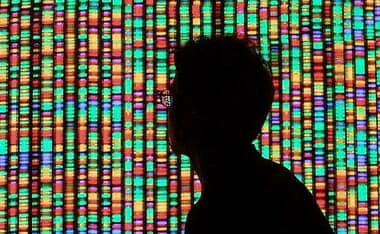I have recently come across a list of “sexes” pictured to the right. The person posting this noted:
- Saw this and wanted to copy it and share it. We love our black-and-white dichotomy because it’s so easy to then label and categorize folks. But it is a LOT more complex than that. Not asking ANYONE to change their conclusions. Just become more aware of the complexities so that you don’t look so ignorant when you post simplistic memes and such…..
A few years back I looked into an example from this list, which I will excerpt how rare these are:
- The term Klinefelter syndrome (KS) describes a group of chromosomal disorder in which there is at least one extra X chromosome to a normal male karyotype, 46,XY. XXY aneuploidy is the most common disorder of sex chromosomes in humans, with prevalence of one in 500 males. Other sex chromosomal aneuploidies have also been described, although they are much less frequent, with 48,XXYY and 48,XXXY being present in 1 per 17,000 to 1 per 50,000 male births. The incidence of 49,XXXXY is 1 per 85,000 to 100,000 male births. In addition, 46,XX males also exist and it is caused by translocation of Y material including sex determining region (SRY) to the X chromosome during paternal meiosis.
A great – short – video regarding the most common occurrence from above is this:
HEALTHY MALE recommends this treatment of this most expressive DISORDER:
Infants and children with Klinefelter syndrome should be examined by their doctor at least every two years to monitor their physical development.
They may need support from specialists to manage any problems with speech, learning, behaviour or psychiatric issues.
Testosterone treatment might be prescribed for boys with Klinefelter syndrome who have a very small penis.
Monitoring the growth and hormone function of boys with Klinefelter syndrome in the lead-up to puberty helps guide decisions about testosterone treatment, which may become necessary.
Testosterone treatment is recommended to many adults with Klinefelter syndrome.
If you have Klinefelter syndrome and are not receiving testosterone treatment, your hormonal function should be checked every 12 months.
I emphasized “disorder” because I have been wanting to connect a thought by C.S. Lewis discussing morality. But as you read the below, a substitution of this debate regarding “the binary” view can be inserted.
[T]his Law or Rule about Right and Wrong used to be called the Law of Nature). . . .
This law was called the Law of Nature because people thought that every one knew it by nature and did not need to be taught it. They did not mean, of course, that you might not find an odd individual here and there who did not know it, just as you find a few people who are colour-blind or have no ear for a tune. But taking the race as a whole, they thought that the human idea of decent behaviour was obvious to every one. And I believe they were right. If they were not, then all the things we said about the war were nonsense. What was the sense in saying the enemy were in the wrong unless Right is a real thing which the Nazis at bottom knew as well as we did and ought to have practised? If they had had no notion of what we mean by right, then, though we might still have had to fight them, we could no more have blamed them for that than for the colour of their hair.
I know that some people say the idea of a Law of Nature or decent behaviour known to all men is unsound, because different civilisations and different ages have had quite different moralities.
But this is not true. There have been differences between their moralities, but these have never amounted to anything like a total difference. If anyone will take the trouble to compare the moral teaching of, say, the ancient Egyptians, Babylonians, Hindus, Chinese, Greeks and Romans, what will really strike him will be how very like they are to each other and to our own. Some of the evidence for this I have put together in the appendix of another book called The Abolition of Man; but for our present purpose I need only ask the reader to think what a totally different morality would mean. Think of a country where people were admired for running away in battle, or where a man felt proud of double-crossing all the people who had been kindest to him. You might just as well try to imagine a country where two and two made five. Men have differed as regards what people you ought to be unselfish to—whether it was only your own family, or your fellow countrymen, or everyone. But they have always agreed that you ought not to put yourself first. Selfishness has never been admired. Men have differed as to whether you should have one wife or four. But they have always agreed that you must not simply have any woman you liked.
But the most remarkable thing is this. Whenever you find a man who says he does not believe in real Right and Wrong, you will find the same man going back on this a moment later. He may break his promise to you, but if you try breaking one to him he will be complaining “It’s not fair” before you can say Jack Robinson. A nation may say treaties do not matter; but then, next minute, they spoil their case by saying that the particular treaty they want to break was an unfair one. But if treaties do not matter, and if there is no such thing as Right and Wrong—in other words, if there is no Law of Nature—what is the difference between a fair treaty and an unfair one? Have they not let the cat out of the bag and shown that, whatever they say, they really know the Law of Nature just like anyone else?
And an older quote that makes the above point, sorta, for law is this:
…Proponents of gay marriage fail utterly to comprehend the idea that laws are made with society, not the individual, in mind. That is why they also fail to grasp the idea that law is predicated upon averages, not outliers. Interestingly, both libertarians and progressives suffer from this lack of understanding.
[….]
But more often they try to undermine the link between marriage and childrearing by pointing to outliers—marriages in which couples choose not to have children or cannot have them because at least one partner happens to be infertile. But this argument only reveals the weakness of the progressive understanding of the law. Put simply, rules that are justified by the average case cannot be undermined by the exceptional case, otherwise known as the outlier. Thus the old maxim, “Hard cases make bad law.”…
Mike S. Adams, Letters To A Young Progressive (Washington, DC: Regnery Publishing, 2013), 81, 82.
Adam and Eve would have been made fully, male and female. Many years later the curse brought mutations into the mix. We do not “add” to god’s ideal, we keep it all the while showing love and respect for the Imago Dei to all without changing societal norms, sports, culture to fit or adapt to outliers… genetic mutations. We treat these disorders.
Treat them.
This is key.
You do not treat the normal, but abnormal.
An article notes that for the first time in the U.K., a major London hospital has launched Europe’s first multidisciplinary clinic for children with the rare genetic condition Klinefelter syndrome.
The centre at the Evelina Children’s Hospital will aim to improve diagnosis of children with the condition, which can cause serious problems including infertility and cardiovascular disease.
Around one in 660 men are affected by the condition.
Males with the condition are born with an extra X chromosome. Typically, a male baby has one X and one Y chromosome and a female baby has two X chromosomes.
Klinefelter syndrome can also cause problems with learning, attention, energy levels and socialising.
[….]
Infertility or relative lack of testosterone can be treated with gonadotrophin-releasing hormone or testosterone replacement therapy, but patients need access to a range of medical specialties including geneticists, endocrinologists, neurodevelopmental and psychological support.
The clinic will bring all these specialties together under one roof.


